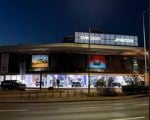The average British adult spends around 5.9 hours per day consuming digital media, with over half of this spent on smartphones and tablets.
This is heavily impacting the motor industry’s marketing activities, as strategies shift to become increasingly digitally focused and click-based.
But in our experience of working with motor dealership groups with franchises across the UK as well as vehicle manufacturers, it’s not time to ditch more ‘traditional’ offline marketing techniques and only implement digital campaigns.
Having analysed different campaigns and gathered in-depth audience insights to gain a state-of-the-nation view on attitudes to advertising, evidence shows audiences still engage heavily with print, TV and radio advertising - especially when paired with digital and social media campaigns. Sponsorships too are still very influential in the sector.
People and print
Our research echoes similar findings by Deloitte in its Global Automotive Consumer Study.
Within this report, 80% of customers said that they found traditional information channels most useful when at a dealership, with 61% stating that they preferred printed brochures or specification sheets.
Furthermore, the survey established that the three most popular influencers for buyers across all age groups were websites, salespeople and other media such as reviews and magazines.
There’s no denying we live in a digital world and the UK’s screen time is increasing, almost daily. So of course, this causes great debate when it comes to marketing and whether traditional forms of media, such as leaflets, sponsorship and press advertising, are still effective.
Having worked in the automotive sector for more than 20 years, we’ve been at the forefront of responding to changing consumer needs and habits, plus we’re constantly testing new techniques to impact sales and responses.
I think when running automotive marketing campaigns it is important to remember that the demographic of people purchasing a vehicle is so vast.
And don’t forget that national stats about ‘screen time’ span all ages groups, including Gen Z whose huge digital usage can skew the reality of other audience’s habits.
We should not get too obsessed with ‘clicks’ alone. Often, you are still dealing with a large proportion of a consumer base that doesn’t always fully understand how new technologies can play a role in their purchase, and so it’s imperative that the full marketing mix is utilised to not alienate those customers.
Integrating digital into a balanced campaign comprising more traditional media maximises results and engagement. It’s the amplification effect – repeat the proposition, time and again, across multiple channels, to increase the chances of cutting-through in a congested media landscape.
Connected campaigns
We find that consistent campaigns, which deliver a common thread throughout the customer journey right through to the point of sale, are proving significantly more effective against every measure.
A great illustration of this has been our work with Isuzu.
We’ve worked with Isuzu for the past five years, as their brand and dealer marketing agency, most recently launching the hotly anticipated 1.9l Isuzu D-Max and special edition vehicles such as the Isuzu D-Max Fury.
Working with Isuzu at every level means we see exactly what works, right the way through the line.
Integration is absolutely key, both on and offline as well from brand communications through to retail messaging.
We know our target audience very well and so we are always looking for new ways to reach them.
For example, their working day doesn't find them online a huge amount, so our digital marketing needs to be highly targeted and complimented with press, point of sale, video, radio, direct marketing and outdoor.
This full-bodied approach has undoubtedly played a huge part in sales growing year on year, reaching an all time high this year.
Website sessions have also increased by 9%, driven by mobile, but brochure requests were up 49%.
'Outsmart, rather than outspend'
So as the marketing landscape continues to evolve, the demands for consumer attention are more congested across more media than ever before.
Engaging with customers is becoming increasingly more difficult, which means that companies really need to focus their effort and budget on the areas that are most effective and will wield the best results.
Outsmarting, rather than outspending, competitors is vital. Analysis of all our campaigns clearly shows that the best way to do this is to focus on the blend of integrated marketing communications – from ‘click right through to brick’.
And our advice to the industry is don’t ditch other channels and techniques just yet – an integrated approach is still the best.
Author: Andy Whitmore, managing director, 438 Marketing















Login to comment
Comments
No comments have been made yet.